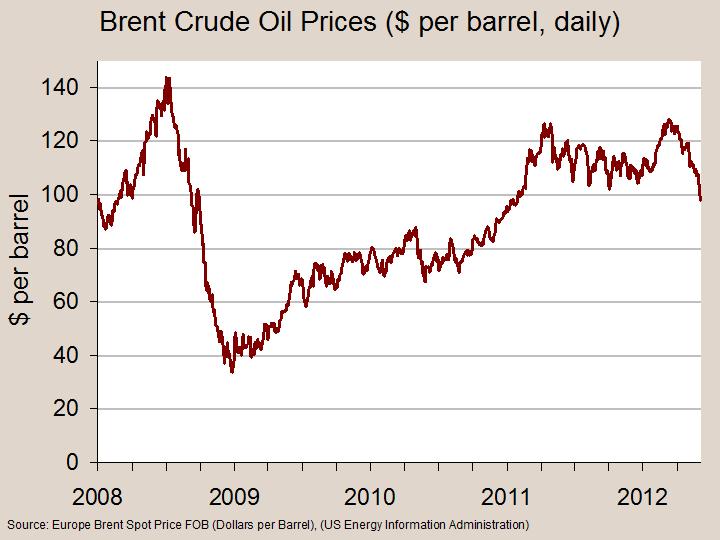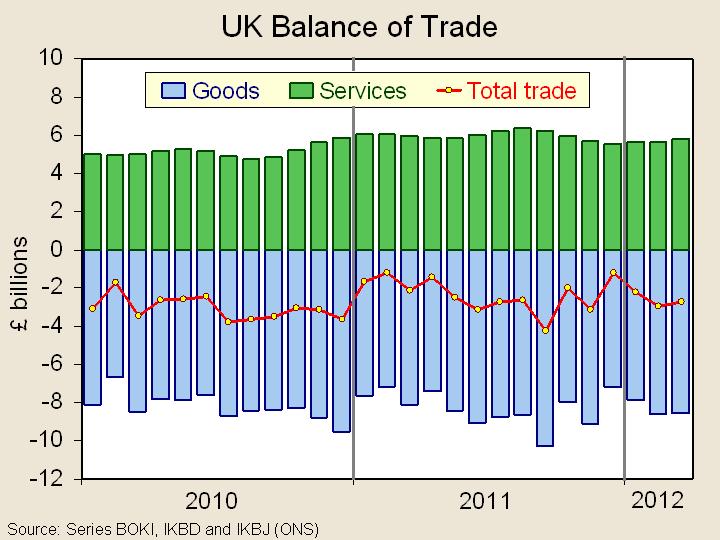 For some people, a pint of beer is a regular thing each week. Add all your pints of beer together, then add your friend’s pints, their friends’ pints and … you get the idea. Once you’ve done that for the entire population, you have an estimate of total beer consumption in the UK. This can then be compared with total consumption of beer in other countries and between continents.
For some people, a pint of beer is a regular thing each week. Add all your pints of beer together, then add your friend’s pints, their friends’ pints and … you get the idea. Once you’ve done that for the entire population, you have an estimate of total beer consumption in the UK. This can then be compared with total consumption of beer in other countries and between continents.
Prior to 2007, Europe and the Americas were the biggest beer drinking continents, but since then, Asia has emerged as the leader of pints of beer consumed, drinking 67bn litres of beer compared with the Americas’ 57bn and Europe’s 51bn in 2011. In per capita terms, Asia is still some way off, with Japan leading the way as the highest Asian country in 41st place, consuming 64 litres of beer per year per capita of the population. So how is this relevant to economics and business?
 Consumption of anything provides jobs – bar workers, manufacturers and in the case of beer, probably law enforcement! It probably also increases utility – after all, why consume it if it’s not going to give you some degree of satisfaction!
Consumption of anything provides jobs – bar workers, manufacturers and in the case of beer, probably law enforcement! It probably also increases utility – after all, why consume it if it’s not going to give you some degree of satisfaction!
We can analyse the demand for beer and see how it varies with changes in price and income. Minimum prices for alcohol have been proposed as a means of reducing consumption, and tax and excise duties are always linked to alcoholic beverages and clearly have an effect on demand. In this case, however, we can also consider the emergence of Asia and how tastes have changed. It is the fastest growing beer market in the world; so what can we deduce from that? As the BBC News article states, it is ‘a sign of a young, upwardly mobile, and increasingly hedonistic population.’
Experts also say that the increased consumption of beer in Asian countries is closely correlated with growing incomes and prosperity. A consumer research analyst from Standard Chartered, Nirgunan Tiruchelvam, said:
“Beer has a clearer correlation with strong economic growth … People tend to drink beer in times of growth. They drink spirits when times are good and when times are bad.”
Data suggest that when a certain level of prosperity is reached in a nation, beer sales begin to rise. As many Asian economies begin to develop rapidly, beer sales have taken off. This could be regarded as a good thing for Europe. With stagnant Western economies, beer producers within Europe may be grateful for a growing demand in Asia. Indeed, many of the world’s biggest breweries are expanding rapidly, providing jobs and income. Consumers in Europe will also be happy to see that beer production remains profitable in other parts of the world. With unemployment still high and recession ongoing, a pint of beer will be a much needed pick-me-up for many people. At least, that’s what the evidence from the Great Depression of the 1930s suggested!!
It’s not good news for everyone, however. Beer production has also increased in Asian countries, most notably in China, which now leads the world as the largest beer producer. This clearly reduces the export potential for European beer producers.
Also, many argue that the growing consumption of beer in Asia is simply an illustration of growing Western influence and it is likely to create severe medical problems in the future. Binge drinking and under-age consumption is already a big problem in Western countries and this could soon begin to extend across the world. The following articles consider the growth in consumption of beer.
Brewers thirsty for expansion as taste for beer grows in emerging markets Guardian, Simon Neville (3/9/12)
Beer in Asia: the drink of economic growth BBC News, Saira Syed (6/9/12)
Study says world beer production hits new high Long Island Business News, Associated Press (8/8/12)
Global beer sales go up for 27th year running News Track India (9/8/12)
Questions
- Use a supply and demand diagram to analyse recent trends in beer consumption across the world.
- Which factors have caused demand in emerging markets to increase? Based on your answer to the previous question, how might that have affected equilibrium prices?
- How has growth in beer consumption throughout Asia benefited Western producers?
- What would you expect the price and income elasticities of demand to be for a product such as beer? Explain your answer.
- To what extent do you think this trend in beer production is a sign of globalisation?
- Evaluate the extent to which the growth in consumption and production of beer in Asia is a good thing. You should consider everyone who and everything might be affected!
 Oil prices have been falling in recent months. By early June they had reached a 17-month low. The benchmark US crude price (the West Texas Intermediate price) fell to $83.2 at the beginning of the month, and Brent Crude (the North Sea reference price for refining into petrol) fell to $97.7 (see chart). (For a PowerPoint of the chart below, click here.)
Oil prices have been falling in recent months. By early June they had reached a 17-month low. The benchmark US crude price (the West Texas Intermediate price) fell to $83.2 at the beginning of the month, and Brent Crude (the North Sea reference price for refining into petrol) fell to $97.7 (see chart). (For a PowerPoint of the chart below, click here.)
At the same time various commodity prices have also been falling. The IMF all commodities price index has fallen by 7.2% over the past 12 months and by 6.2% in May alone. Some commodities have fallen much faster. In the 12 months to May 2012, natural gas fell by 44%, wheat by 25%, lamb by 37%, Arabica coffee by 36%, coconut oil by 45%, cotton by 47%, iron ore by 23% and tin by 29%.
Although part of the reason for the fall in the price of some commodities is increased supply, the main reason is weak world demand. And with continuing problems in the eurozone and a slowdown in China and the USA, commodity price weakness is likely to continue.
 So is this good news? To the extent that commodity prices feed through into consumer prices and impact on the rate of inflation, then this is good news. As inflation falls, so central banks will be encouraged to make further cuts in interest rates (in the cases where they are not already at a minimum). For example, the Reserve Bank of Australia cut its cash rate last week from 3.75% to 3.5%. This follows on from a cut from 4.25% on 1 May. In cases where there is no further scope for interest rate cuts (e.g. the US Federal Reserve Bank, whose interest rate is between 0% and 0.25%), then the fall in inflation may encourage a further round of quantitative easing.
So is this good news? To the extent that commodity prices feed through into consumer prices and impact on the rate of inflation, then this is good news. As inflation falls, so central banks will be encouraged to make further cuts in interest rates (in the cases where they are not already at a minimum). For example, the Reserve Bank of Australia cut its cash rate last week from 3.75% to 3.5%. This follows on from a cut from 4.25% on 1 May. In cases where there is no further scope for interest rate cuts (e.g. the US Federal Reserve Bank, whose interest rate is between 0% and 0.25%), then the fall in inflation may encourage a further round of quantitative easing.
But falling commodity prices are also a reflection of bad news, namely the low economic growth of the world economy and fears of turmoil from a possible Greek exit from the euro.
Update
A day after this was written (9/6/12), a deal was agreed between eurozone ministers to provide support of up to €100 billion for Spanish banks. This helped to reduce pessimism about the world economy, at least temporarily. Stock markets rose and so too did oil prices, by around 1%. But if pessimism increases again, then the fall is likely to resume.
Articles
Oil prices hit a 17-month low on China slowdown fears BBC News (8/6/12)
Oil gives up gains without signs of Fed move BloombergBusinessweek, Sandy Shore (7/6/12)
Oil Heads for Longest Run of Weekly Losses in More Than 13 Years BloombergBusinessweek, (8/6/12)
Gold plunges as Bernanke gives no hint of stimulus Live5News(7/6/12)
Oil Price Tumbles Below $83 on Weak Economy Money News(8/6/12)
World food price index expected to fall for May Reuters(6/6/12)
Oil price losing streak continues Guardian, Julia Kollewe (8/6/12)
Data
Spot fuel prices US Energy Information Administration
Commodity Prices Index Mundi
Crude Oil Price Index Index Mundi
Questions
- Why have crude oil prices fallen to their lowest level for 17 months?
- How can the concepts of income elasticity of demand, price elasticity of supply and price elasticity of demand help to explain the magnitude of the fall in crude oil prices?
- Would a fall in inflation linked to a fall in commodity prices be a fall in cost-push or demand-pull inflation? Explain.
- What are the macroeconomic implications of the fall in crude oil prices?
- What factors are likely to have significant impact on crude oil prices in the coming months
- Why is it difficult to predict crude oil prices over the coming months?
 With tight incomes, the first things that families tend to cut back on are the more luxury items. Extensions to houses are delayed, interior refurbishments are put off and the old car that was going to be traded in becomes something you can live with for another few years.
With tight incomes, the first things that families tend to cut back on are the more luxury items. Extensions to houses are delayed, interior refurbishments are put off and the old car that was going to be traded in becomes something you can live with for another few years.
Car sales have been adversely affected during the recession, but data for May 2012 show a positive turn. Manufacturers have said that car sales are up by 7.9% compared with May last year. According to the Society of Motor Manufacturers and Traders (SMTT), much of the increased demand has come from private sales, where the increase has been over 14%.
This data may not be the answer to the economic troubles, but it is perhaps an indication that confidence is beginning to return. However, should things go from bad to worse in the eurozone, it isn’t hard to see data for the coming months showing the opposite trend. One other key piece of information to take from this data is the growth in the sales of lower-emissions vehicles. Sales of these were up 31.8% in May 2012 compared to the same time last year. Jonathan Visscher from SMMT said:
‘The green sector is growing fast…Every car manufacturer is going to have a hybrid model on its lists by the end of this year, even Ferrari.’
The continuing upward trend in car sales is by no means guaranteed to continue, especially with things like the expected rise in fuel duty later this year and the ongoing crisis in the eurozone, with Spanish banks potentially looking for help via a bail-out in the not too distant future. The following articles consider the acceleration in car sales.
UK sees biggest annual rise in car sales for nearly 2 years Reuters (8/6/12)
New car sales accelerate ahead Press Association (8/6/12)
UK new car sales accelerated in May, say manufacturers BBC News (8/6/12)
New car sales accelerate ahead Independent, Peter Woodman (8/6/12)
Car registrations accelerate in May Financial Times, John Reed (8/6/12)
Questions
- How would you define a luxury good? What is the relationship with income?
- How could an increase in car sales benefit the economy? How could the multiplier effect have an impact?
- Which factors have contributed towards the growth in low-emissions cars?
- Sales of low-emissions cars have significantly increased. However, why is this increase
- What are some of the key things that can help to bring a recession to an end? Into which general category would you place this increase in car sales?
- Fuel duty is expected to rise later this year. How might this affect the number of new car registrations? What does your answer tell you about the cross elasticity of demand?
 A bumper olive crop in Spain would seem to be good news for Spanish olive growers. But the effect has been a fall in the prices of olives and olive oil. With 43% of the global supply, Spain is the world’s largest olive oil producer and changes in Spanish output have a big effect on the world price.
A bumper olive crop in Spain would seem to be good news for Spanish olive growers. But the effect has been a fall in the prices of olives and olive oil. With 43% of the global supply, Spain is the world’s largest olive oil producer and changes in Spanish output have a big effect on the world price.
Premium extra virgin olive oil has fallen to its lowest level (even in nominal terms) since 2002. Today the price is around $2900 (£1850) a tonne in the wholesale market; in May 2006 it peaked at nearly $5854 – double today’s price.
And while this is bad news for Spanish farmers, for farmers in countries without bumper harvests, the low prices are even harder to bear.

The problem is being exacerbated by a fall in demand in many countries currently suffering recession, such as Greece, Portugal and Italy – all big olive oil consumers. Although olive oil prices have fallen, it is still more expensive than various substitutes. Many people are thus buying these cheaper alternatives, such as sunflower oil, especially for cooking.
What is more, cheaper substitutes for olive oil are increasing in supply. Take the case of rape seed oil in the UK. As the Mail Online article, linked to below, reports:
“UK rape planting is thought to have hit an all-time high this year as British farmers take advantage of the high prices being demanded for rapeseed – base ingredient of many vegetable oils and other edible oils.
Much of the UK crop is used by the local food industry, although some analysts are predicting strong UK yields will give farmers the opportunity to export more to Europe. Because of rising export demand, oil users in the UK claim there is little to indicate the price they are paying for rapeseed oil will drop substantially in the near future.”
The market for olive oil is global. Crop yields in one part of the world, both of olives and of substitute crops, affect global prices and hence growers’ incomes worldwide.
Webcast
 Debt hit countries suffer from olive oil price dip Euronews (28/5/12)
Debt hit countries suffer from olive oil price dip Euronews (28/5/12)
News articles
Olive oil price slides as glut hits southern Europe Gulf News, Javier Blas (29/5/12)
Farmers feel squeeze as olive oil price slips The National, Gregor Stuart Hunter (29/5/12)
Olive oil surplus adds to economic pain in Spain The Week (29/5/12)
Olive oil price fall brings further pain for Spain, Italy and Greece The Telegraph (28/5/12)
Pass notes No 3183: Olive oil Guardian (28/5/12)
More Storage Aid for Virgin Olive Oil Olive Oil Times, Julie Butler (17/5/12)
Yellow Britain from the air: Rapeseed’s relentless march across the country pictured in vivid colour as farmers cash in after price of crop’s oil soars Mail Online, Sean Poulter (29/5/12)
Data
Commodity Prices Index Mundi
Olive Oil, extra virgin Monthly Price – US Dollars per Metric Ton Index Mundi
Questions
- Identify the factors that have contributed to the fall in the price of olive oil. Illustrate the effects on a demand and supply diagram.
- Explain what is meant by the fallacy of composition and how it relates to a price taker, such as a farmer.
- How do the price elasticities of demand and supply of olive oil help to explain the magnitude of the price fall?
- What developments in other vegetable oils are affecting the olive oil market? What determines the magnitude of these effects?
- What actions have been taken by the EU to support the olive oil market? Is this the most appropriate policy response?
- Why are Middle Eastern olive producers unable to compete on cost with the major EU producing countries?
 The UK’s trade deficit narrowed in March to £2.74bn from £2.95bn in February. The goods deficit fell just slightly to £8.56bn from £8.59bn, but the services surplus rose more substantially to £5.83bn from £5.64bn.
The UK’s trade deficit narrowed in March to £2.74bn from £2.95bn in February. The goods deficit fell just slightly to £8.56bn from £8.59bn, but the services surplus rose more substantially to £5.83bn from £5.64bn.
So was this a sign of the UK economy’s relative weakness holding back the demand for imports? Or was it a sign of a recovering export sector, especially in services?
 And what of the coming months? What will be the effect of a growing crisis in the eurozone on (a) the sterling exchange rate, (b) the rate of economic growth outside the UK and (c) UK economic growth? And what will be the effect of these on the demand for imports and exports and on the trade balance? The following articles examine the issues.
And what of the coming months? What will be the effect of a growing crisis in the eurozone on (a) the sterling exchange rate, (b) the rate of economic growth outside the UK and (c) UK economic growth? And what will be the effect of these on the demand for imports and exports and on the trade balance? The following articles examine the issues.
(For a PowerPoint of the above chart, click on the following link: Balance of trade)
Articles
UK goods trade deficit stable as exports to non-EU countries rebound Reuters (15/5/12)
UK trade deficit narrows in March to £2.7bn BBC News (15/5/12)
Exports close UK trade deficit Guardian (15/5/12)
First trade surplus in cars since 1976 The Telegraph, Emma Rowley (15/5/12)
UK trade deficit narrows in March Fresh Business Thinking, Marcus Leach (15/5/12)
ONS Release
UK Trade, March 2012 ONS Release (15/5/12)
Questions
- Distinguish between the balance on trade in goods, the balance of trade and the balance on current account.
- Why did the UK’s trade deficit fall in March 2012?
- Why did the UK experience its first trade surplus in cars since 1976?
- What is likely to happen to the UK’s balance of trade in the coming months? How is the income elasticity of demand for UK exports and imports relevant to the answer?
- What has been happening recently to the sterling exchange rate? How will this impact on the UK’s balance of trade? How will the size of this impact depend on the price elasticity of demand and supply for imports and exports?
 For some people, a pint of beer is a regular thing each week. Add all your pints of beer together, then add your friend’s pints, their friends’ pints and … you get the idea. Once you’ve done that for the entire population, you have an estimate of total beer consumption in the UK. This can then be compared with total consumption of beer in other countries and between continents.
For some people, a pint of beer is a regular thing each week. Add all your pints of beer together, then add your friend’s pints, their friends’ pints and … you get the idea. Once you’ve done that for the entire population, you have an estimate of total beer consumption in the UK. This can then be compared with total consumption of beer in other countries and between continents. Consumption of anything provides jobs – bar workers, manufacturers and in the case of beer, probably law enforcement! It probably also increases utility – after all, why consume it if it’s not going to give you some degree of satisfaction!
Consumption of anything provides jobs – bar workers, manufacturers and in the case of beer, probably law enforcement! It probably also increases utility – after all, why consume it if it’s not going to give you some degree of satisfaction!






